Detroit techno music is important. Any student of the club music of the modern age knows this. The sound that fermented among the majority black population of the decaying industrial city in the late 1970s and early 1980s, as disco's last remnants fused with the avant-garde experiments of Europeans who were first getting their hands on synthesisers and drum machines, went on to change the world. It seeded the UK's rave explosion, jungle, drum'n'bass and all the electronic experiments that came after. It created a futurist aesthetic, which managed to be somehow both optimistic and dystopian, that prepared a generation – if they were listening – for the information age about to engulf them.
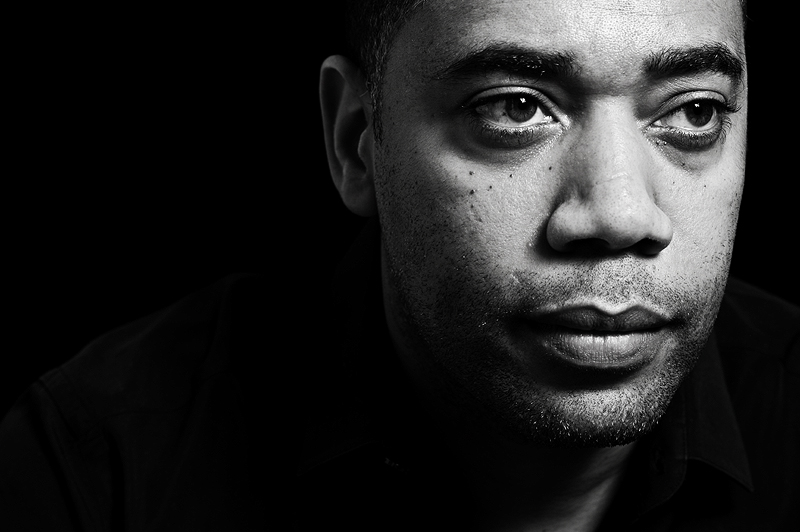 And yet, as trends shifted and dance music's micro-genres proliferated, caring for the roots of techno became cultish, even nerdy, in its cultural image. It's telling that the logo of Underground Resistance, the most militant, pro-black, and hugely influential of Detroit techno acts, was bastardised a decade or so back for “Undergraduate Resistance” T-shirts: the joke being that this was music for students. Other variants of dancefloor techno overtook the Detroit style, and neatly coiffed white artists became global stars while very few of the original black musicians who'd birthed the style were able to cling on to their coattails as electronic music steadily took over the world's nightspots.
And yet, as trends shifted and dance music's micro-genres proliferated, caring for the roots of techno became cultish, even nerdy, in its cultural image. It's telling that the logo of Underground Resistance, the most militant, pro-black, and hugely influential of Detroit techno acts, was bastardised a decade or so back for “Undergraduate Resistance” T-shirts: the joke being that this was music for students. Other variants of dancefloor techno overtook the Detroit style, and neatly coiffed white artists became global stars while very few of the original black musicians who'd birthed the style were able to cling on to their coattails as electronic music steadily took over the world's nightspots.
Which is why it was heartening to see the bar space of the ICA absolutely rammed with a fantastically broad array of punters last night for the launch of an exhibition documenting the history of the scene. That exhibition itself is tiny. Like the recent rather similar Radical Disco: Architecture and Nightlife in Italy, 1965-1975, it takes place in the ICA's reading room – which led to a queue snaking through the crowd as people were allowed through on a one-in-one-out basis. However, in its couple of videos, scattering of record sleeves, and documentation covering the walls, it manages to deliver an impressively condensed potted history from the flamboyance of the disco days to the fearsome rhetoric of the Underground Resistance collective in the early Nineties.
 And in the bar, the music itself was proving its enduring value. The British DJ/producer Kirk DeGiorgio – looking pale having come straight from his hospital bed after an operation – was blending all the Detroit classics with the expertise and delight of a man who fully participated in the scene: from the mid-Eighties DeGiorgio worked with many of the most important names in Detroit. And as the machine funk of records like “Nude Photo” by Derrick May's Rhythim Is Rhythim, the Missy Elliot-inspiring “Clear” by Juan Atkin's Cybotron (pictured above), and the descending flute-like chords of Carl Craig's sublime “At Les” slid into the mix (Craig, pictured top right), the response was unselfconsciously joyous. From the top to the bottom of the venue, standing on chairs and spilling into corridors, the capacity crowd danced as if it was 3am, not 8.30 on a muggy Tuesday night. This is music that 25 to 30 years on still wires itself direct into the nervous system, hitting the pleasure centres and stimulating the articulation of your limbs way before any conscious comprehension.
And in the bar, the music itself was proving its enduring value. The British DJ/producer Kirk DeGiorgio – looking pale having come straight from his hospital bed after an operation – was blending all the Detroit classics with the expertise and delight of a man who fully participated in the scene: from the mid-Eighties DeGiorgio worked with many of the most important names in Detroit. And as the machine funk of records like “Nude Photo” by Derrick May's Rhythim Is Rhythim, the Missy Elliot-inspiring “Clear” by Juan Atkin's Cybotron (pictured above), and the descending flute-like chords of Carl Craig's sublime “At Les” slid into the mix (Craig, pictured top right), the response was unselfconsciously joyous. From the top to the bottom of the venue, standing on chairs and spilling into corridors, the capacity crowd danced as if it was 3am, not 8.30 on a muggy Tuesday night. This is music that 25 to 30 years on still wires itself direct into the nervous system, hitting the pleasure centres and stimulating the articulation of your limbs way before any conscious comprehension.
That crowd was distinctly un-nerdy too. It's true that for a period techno crowds earned their reputation, and had this exhibition taken place 15 years ago it's entirely possible the place would have been homogeneous: all-white, all-male, very straight, with a tendency towards cropped hair and hoodies. But last night, while certainly still a little weighted towards men, the selection of people was multiracial, polysexual and, especially as time went on and the queue outside grew and grew, included a very glamorous and unusual-looking younger contingent. The whole thing was a reminder of club music's historical function as a melting-pot (almost literally, as the sweaty heat increased), and a heartening indicator that the strange and beautiful music that emerged, and continues to emerge, from a highly troubled city is still appreciated on that level. The exhibition itself may really be a toe-dip into techno's waters, but the success of its opening should be a beacon to curators outside the clubland economy that this culture is vital and of interest to many.




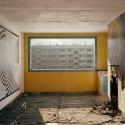

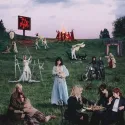

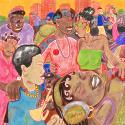

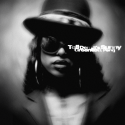




Add comment